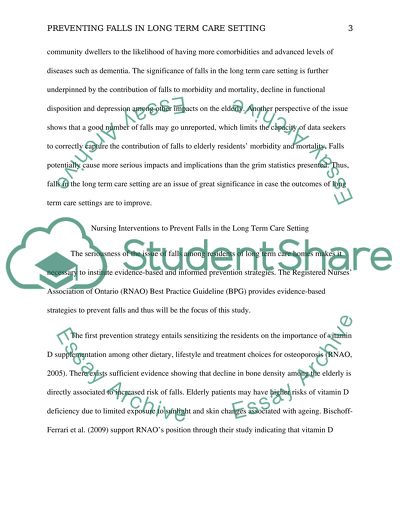Cite this document
(“Preventing Falls in Long Term Care Setting Essay”, n.d.)
Retrieved from https://studentshare.org/nursing/1442888-preventing-falls
Retrieved from https://studentshare.org/nursing/1442888-preventing-falls
(Preventing Falls in Long Term Care Setting Essay)
https://studentshare.org/nursing/1442888-preventing-falls.
https://studentshare.org/nursing/1442888-preventing-falls.
“Preventing Falls in Long Term Care Setting Essay”, n.d. https://studentshare.org/nursing/1442888-preventing-falls.


